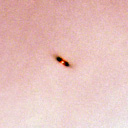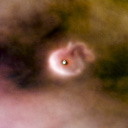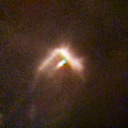Fichier:Orion Nebula with proplyd highlights (captured by the Hubble Space Telescope).jpg

Taille de cet aperçu : 800 × 525 pixels. Autres résolutions : 320 × 210 pixels | 640 × 420 pixels | 1 024 × 672 pixels | 1 280 × 840 pixels | 2 560 × 1 680 pixels | 15 503 × 10 176 pixels.
Fichier d’origine (15 503 × 10 176 pixels, taille du fichier : 99,1 Mio, type MIME : image/jpeg)
Historique du fichier
Cliquer sur une date et heure pour voir le fichier tel qu'il était à ce moment-là.
| Date et heure | Vignette | Dimensions | Utilisateur | Commentaire | |
|---|---|---|---|---|---|
| actuel | 18 décembre 2009 à 18:14 |  | 15 503 × 10 176 (99,1 Mio) | Tryphon | {{Information |Description=The en:Orion Nebula is home to tens of what could be fledgling en:planetary systems. In this image, six of these modest "smudges" with big potential are highlighted (from top down): [[:File:Proplyd 132-1832 in the Or |
Utilisation du fichier
La page suivante utilise ce fichier :
Usage global du fichier
Les autres wikis suivants utilisent ce fichier :
- Utilisation sur ar.wikipedia.org
- Utilisation sur en.wikipedia.org
- Utilisation sur eu.wikipedia.org
- Utilisation sur fi.wikipedia.org
- Utilisation sur hi.wikipedia.org
- Utilisation sur sv.wikipedia.org
- Utilisation sur zh.wikipedia.org








